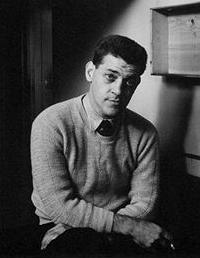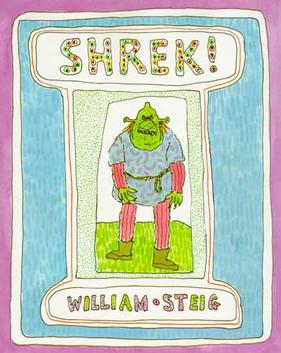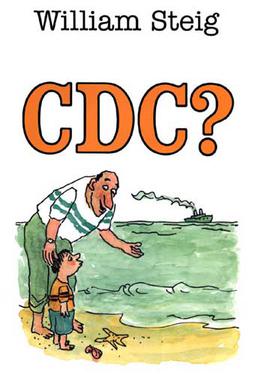
A cartoon is a type of visual art that is typically drawn, frequently animated, in an unrealistic or semi-realistic style. The specific meaning has evolved, but the modern usage usually refers to either: an image or series of images intended for satire, caricature, or humor; or a motion picture that relies on a sequence of illustrations for its animation. Someone who creates cartoons in the first sense is called a cartoonist, and in the second sense they are usually called an animator.

Pizza is a dish of Italian origin consisting of a usually round, flat base of leavened wheat-based dough topped with tomatoes, cheese, and often various other ingredients, which is then baked at a high temperature, traditionally in a wood-fired oven.

The New Yorker is an American magazine featuring journalism, commentary, criticism, essays, fiction, satire, cartoons, and poetry. Founded as a weekly in 1925, the magazine is published 47 times annually, with five of these issues covering two-week spans. Although its reviews and events listings often focus on the cultural life of New York City, The New Yorker also produces long-form journalism and shorter articles on a variety of topics, has a wide audience outside New York, and is read internationally.

Sir Quentin Saxby Blake, is an English cartoonist, caricaturist, illustrator and children's writer. He has illustrated over 300 books, including 18 written by Roald Dahl, which are among his most popular works. For his lasting contribution as a children's illustrator he won the biennial international Hans Christian Andersen Award in 2002, the highest recognition available to creators of children's books. From 1999 to 2001, he was the inaugural British Children's Laureate. He is a patron of the Association of Illustrators.

William Steig was an American cartoonist, illustrator and writer of children's books, best known for the picture book Shrek!, which inspired the film series of the same name, as well as others that included Sylvester and the Magic Pebble, Abel's Island, and Doctor De Soto. He was the U.S. nominee for both of the biennial, international Hans Christian Andersen Awards, as a children's book illustrator in 1982 and a writer in 1988.

Raymond Redvers Briggs was an English illustrator, cartoonist, graphic novelist and author. Achieving critical and popular success among adults and children, he is best known in Britain for his 1978 story The Snowman, a book without words whose cartoon adaptation is televised and whose musical adaptation is staged every Christmas.

Speech balloons are a graphic convention used most commonly in comic books, comics, and cartoons to allow words to be understood as representing a character's speech or thoughts. A formal distinction is often made between the balloon that indicates speech and the one that indicates thoughts; the balloon that conveys thoughts is often referred to as a thought bubble or conversation cloud.

Harry Bliss is an American cartoonist and illustrator. Bliss has illustrated many books, and produced hundreds of cartoons and 25 covers for The New Yorker. Bliss has a syndicated single-panel comic titled Bliss. Bliss is syndicated through Tribune Content Agency and appears in over 80 newspapers in the United States, Canada and Japan.

Shrek! is a fantasy comedy picture book published in 1990 by American book writer and cartoonist William Steig, about a repugnant green monster who leaves home to see the world and ends up marrying an ugly princess. The book was generally well received upon publication, with critics praising the illustrations, originality, and writing. Critics have also described Shrek as an antihero and noted the book's themes of satisfaction and self-esteem. The book served as the basis for the first Shrek film (2001) and DreamWorks Animation's popular Shrek film series starring Mike Myers over a decade after its publication.
Robert Kraus was an American children's author illustrator, cartoonist and publisher. His successful career began early at the New Yorker, producing over hundreds of cartoons and nearly two dozen covers for the magazine over 15 years. Afterwards, he pivoted his career to children's literature, writing and illustrating over 100 children’s books and publishing even more as the founder of Windmill Books Publishing House. His body of work is best remembered for depicting animal heroes who always try their best and never give up, which were ideals important to him at an early age.

Weston Woods Studios is a production company that makes audio and short films based on well-known books for children. It was founded in 1953 by Morton Schindel in Weston, Connecticut, and named after the wooded area near his home. Weston Woods Studios' first project was Andy and the Lion in 1954, and its first animated film was The Snowy Day in 1964. In 1968, Weston Woods began a long collaboration with animator Gene Deitch. Later, they opened international offices in Henley-on-Thames, England, UK (1972), as well as in Canada (1975), and in Australia (1977). In addition to making the films, Weston Woods also conducted interviews with the writers, illustrators, and makers of the films. The films have appeared on children's television programs such as Captain Kangaroo, Eureeka's Castle, and Sammy's Story Shop. In the mid-1980s, the films were released on VHS under the Children's Circle titles, and Wood Knapp Video distributed these releases from 1988 to 1995.

CDC? is a children's puzzle book written and illustrated by author and cartoonist William Steig. Originally published in 1984, it is a sequel to his 1968 picture book CDB! and is of the same concept: letters and numbers that suggest the sounds of words or phrases are printed as captions for interpretive cartoons. The reader guesses what the letters and numbers are supposed to represent in actual words: the book's title, for example, represents the question "See the sea?"
Jane Dyer is an American author and illustrator of more than fifty books, including Amy Krouse Rosenthal's Cookies series and Jeanne Birdsall's Lucky and Squash.

Amy Krouse Rosenthal was an American author of both adult and children's books, a short film maker, and radio show host. She is best known for her memoir Encyclopedia of an Ordinary Life, her children's picture books, and the film project The Beckoning of Lovely. She was a prolific writer, publishing more than 30 children's books between 2005 and her death in 2017. She is the only author to have three children's books make the Best Children's Books for Family Literacy list in the same year. She was a contributor to Chicago's NPR affiliate WBEZ, and to the TED conference.
Comics has developed specialized terminology. Several attempts have been made to formalize and define the terminology of comics by authors such as Will Eisner, Scott McCloud, R. C. Harvey and Dylan Horrocks. Much of the terminology in English is under dispute, so this page will list and describe the most common terms used in comics.
Robert Leighton is an American cartoonist, writer, artist, puzzle writer, illustrator, and humorist. He lives and works in New York City. His cartoons have appeared regularly in The New Yorker and other periodicals. In 1996, with Mike Shenk and Amy Goldstein, Leighton co-founded Puzzability, a puzzle-writing company. As part of Puzzability, Leighton has coauthored many books of puzzles, as well as puzzle-oriented Op-Ed pieces for The New York Times.
A gramogram, grammagram, or letteral word is a letter or group of letters which can be pronounced to form one or more words, as in "CU" for "see you". They are a subset of rebuses, and are commonly used as abbreviations.

Duck! Rabbit! is a 2009 children's picture book written by Amy Krouse Rosenthal and illustrated by Tom Lichtenheld. Published by Chronicle Books, it follows two narrators as they debate whether an illustration is a picture of a duck or a rabbit.
Steven Maxwell Johnson is an American cartoonist, futurist, and inventor.
Brigette Barrager is an American illustrator and author of children's books.













